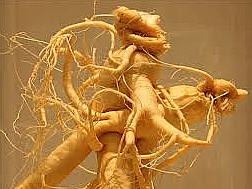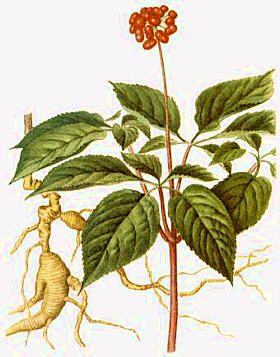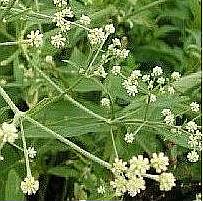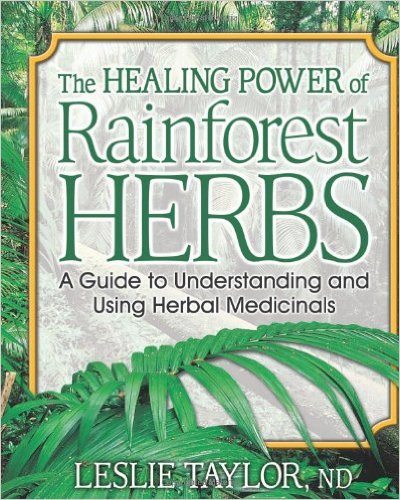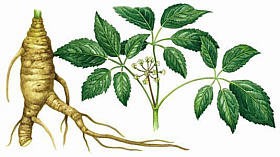botanical names, which can make it
confusing. Taylor refers to it as
. Other
common names besides Suma include Brazilian ginseng, Carango Acu,
Paratudo, Russian Secret, and Para Tudo ("for everything") which is a reference
to many Brazilian herbalist's belief that it is a veritable panacea --
an exaggeration perhaps, but certainly a sign of reverence.
Uses & Protocols

Among the indigenous in Brazil, Suma is used
primarily as a general tonic (taken in tea form), as a rejuvenating, energy,
and sexual tonic; calming agent; aphrodisiac; and calming agent. With the advent
of more thorough investigations, additional indications have been added by
modern practitioners: for use as an adatogen, cellular oxygenator, memory enhancement, blood sugar
regulation, immune booster, estrogen builder, muscle strengthening, impotence, chronic
fatigue, diabetes, cancer, PMS, mononucleosis, menopause, and hormonal disorders.
Additional applications include: menopausal and menstrual symptoms, minimizing
the side effects of birth control medications, high cholesterol, infertility,
neutralization of toxins, and as a general restorative after illness.
Warnings & Contraindications

Women with estrogen-positive cancers should avoid.
Dosage should be reduced if stomachic or gastric discomfort result. No drug
contraindications reported.
Shelf-Life

Five years or more.
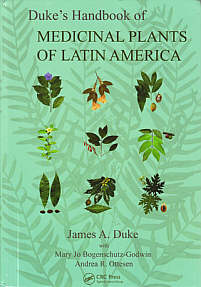
Medicinal Activities
 Further information for practitioners:
Further information for practitioners:
World-famous botanist Dr. James Duke attributes the following activities
to this plant
(p. 347-349; see hardcopy cover at right),
drawn from the extant literature. (See his graduation for "level of
efficacy" on our
amazon traditionals page;
followed by Duke's bibliographic abbreviations (in capital letters),
which we
identify
on a separate page.)

Duke provides a "
food farmacy potential" score for this
plant of "FNFF=!."
- Adaptogenic (f; APA; RAI)
- Anabolic (f; RAI)
- Analgesic (f; RAI)
- Androgenic (1; X14967943)
- Antiaging (f; MPB)
- Antiallergenic (f; RAI)
- Antiascites (1; APA)
- Anticancer (f1; APA; MPB; X16039950)
- Antidiabetic (f; MPB)
- Antiinflammatory (f; RAI)
- Antileukemic (1; X10917139)
- Antilymphomic (1; RAI)
- Antimelanomic (f; APA)
- Antineoplastic (1; X16051424)
- Antitumor (1; APA)
- Antiviral (f; APA)
- Aphrodisiac (f1; MPB; X10227074)
- Chemopreventive (f; APA)
- Circulotonic (f; RAI)
- Estrogenic (1; RAI; X14967943)
- Hypoglycemic (1; X15784959)
- Immunostimulant (f1; APA; RAI; X16214177)
- Memorigenic (f; RAI)
- Myotonic (f; RAI)
- Orexigenic (f; RAI)
- Phagocytotic (1; X16214177)
- Progesterogenic (1; X14967943)
- Testosterogenic (1; X14967943)
- Tonic (f; MPB)
- Tranquilizer (f; RAI)
Indications
 Further information for practitioners:
Further information for practitioners:
Duke provides the following indications for this plant:
- Aging (f; MPB)
- Allergies (f; RAI)
- Alzheimer's (f; RAI)
- Anemia (f1; RAI; X11091225)
- Arteriosclerosis (f; RAI)
- Arthosis (f; RAI)
- Asthma (f; RAI)
- Bronchosis (f; RAI)
- Cancer (f1; APA; MPB; X16039950)
- Cancer, colon (1; RAI)
- Cancer, liver (1; X16039950)
- Cancer, lung (1; RAI)
- CFS (f; RAI)
- Circulosis (f; RAI)
- Diabetes (f1; APA; MPB; X15784959)
- Dysentery (f; RAI)
- Dysmenorrhea (f; RAI)
- Dyspepsia (f; RAI)
- EBV (f; APA; RAI)
- Enterosis (1; RAI)
- Fatigue (f; APA)
- Gas (f; RAI)
- Gastrosis (f; RAI)
- Hepatosis (1; X16039950)
- High Blood Pressure (f; RAI)
- High Cholesterol (f; RAI)
- Hyperglycemia (1; RAI; X15784959)
- Immunodepression (f; RAI)
- Impotence (f1; MPB; RAI; X10227074)
- Inflammation (f1; RAI)
- Leukemia (1; RAI; X10917139)
- Lymphoma (1; RAI)
- Malaria (f; RAI)
- Melanoma (f; APA)
- Memory (f; RAI)
- Menopause (f; APA; RAI)
- Mononucleosis (f; RAI)
- Neurosis (f; RAI)
- Pain (f1; RAI)
- PMS (f; RAI)
- Psoriasis (f; RAI)
- Rheumatism (f; RAI)
- Sickle Cell Anemia (1; X11091225)
- Sterility (f; RAI)
- Stomachache (f; RAI)
- Stress (f; APA; RAI)
- Tremors (f; RAI)
- Tumors (f; RAI)
- Viruses (f; APA)
